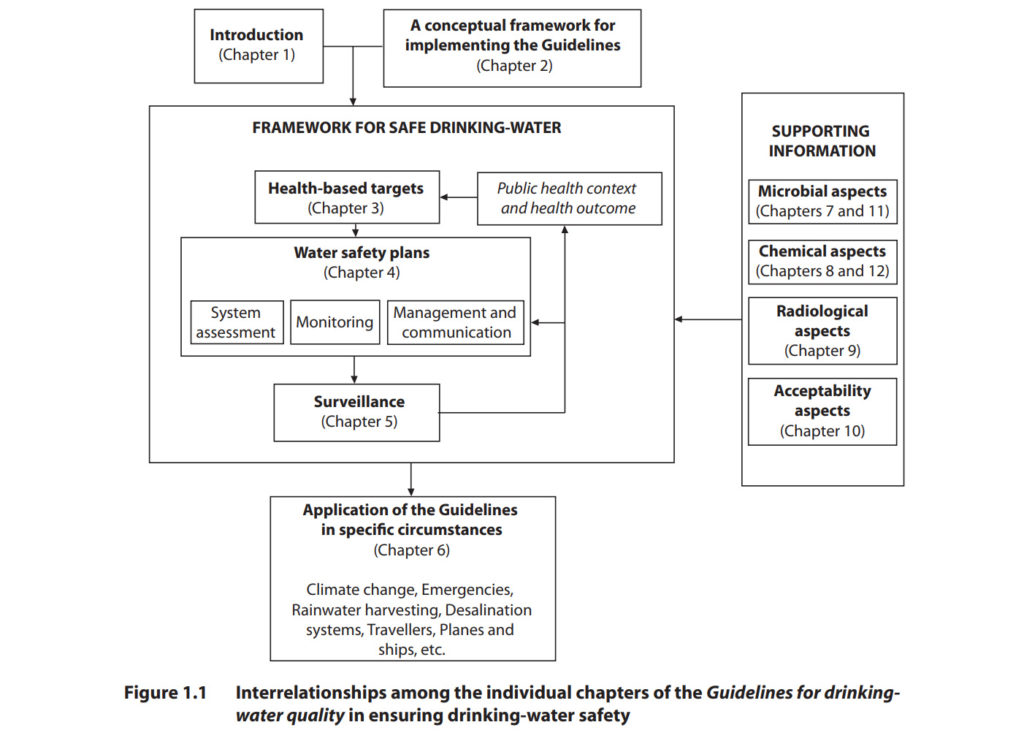Blog
Framework For Safe Drinking Water (WHO)

The basic and essential requirements to ensure the safety of drinking-water are a “framework” for safe drinking water, comprising health-based targets established by a competent health authority, adequate and properly managed systems (adequate infrastructure, proper monitoring and effective planning and management) and a system of independent surveillance.
A holistic approach to the risk assessment and risk management of a drinking water supply increases confidence in the safety of the drinking water. This approach entails systematic assessment of risks throughout a drinking water supply from the catchment and its source water through to the consumer and identification of the ways in which these risks can be managed, including methods to ensure that control measures are working effectively.
It incorporates strategies to deal with dayto-day management of water quality, including upsets and failures. In this respect, climate change in the form of increased and more severe periods of drought or more intense rainfall events leading to flooding can have an impact on both the quality and the quantity of water and will require planning and management to minimize adverse impacts on drinking-water supplies.
In Stockholm, in 1999, it was agreed that future guidelines for drinking-water, wastewater and recreational water should integrate assessment of risk, risk management options and exposure control elements within a single framework with embedded quality targets. Following this approach, the assessment of risk is not a goal in its own right, but rather a basis for decision making. The framework for safe drinking-water and the recommended approach for regulations, policies and programmes are based on this overall framework, known as the Stockholm Framework
Climate change also needs to be considered in the light of demographic change, such as the continuing growth of cities, which itself brings significant challenges for drinking-water supply. In support of the framework for safe drinking-water, the Guidelines provide a range of supporting information, including microbial aspects chemical aspects, radiological aspects and acceptability aspects. Figure 1.1 provides an overview of the interrelationships among the individual chapters of the Guidelines in ensuring drinking-water safety.

The Guidelines are applicable to large metropolitan and small community piped drinking-water systems and to non-piped drinking-water systems in communities and in individual dwellings. The Guidelines are also applicable to a range of specific circumstances, including buildings, travellers and conveyances.
